Contributed by: Georgia Ellis My Personal Journey of Self-Empowerment In my current and previous roles as a leader, coach, and facilitator, I've discovered that confidence isn't just a trait; it's a mindset that can be cultivated and honed over time. Recently I facilitated management/leadership training for a group of predominantly male, blue-collar managers, the group was a mix of office-based managers and workshop managers who managed skilled fabricators. Most in the room had never had any form of management or leadership training before and I was a little apprehensive around the reception I’d receive. We got off to a flying start, a little bit of humour and storytelling goes a long way to making those not used to being boxed up in a small conference room for a full day feel at ease. We finally made it to the morning tea break when a male participant mentioned that he was really good at reading people, so I challenged him by asking “What’s your read on me?” his reply “ I can tell you have a lot of self-confidence, the way you handled a room of what I would consider a difficult audience and had everyone contributing withing the first 30 minutes shows both that you are passionate about what you do and you know your stuff”. It was a lovely compliment, and put me further at ease for the rest of the day… but it also got me thinking… I wasn’t always this way… I hadn't always exuded confidence... what had I done that allowed me to display an air of confidence that was clearly noticeable by other people? Upon reflection I realised that my journey towards greater confidence began with a simple yet powerful approach that accelerated my progress: flooding my subconscious with a vision of the person I aspired to be. Through mental and physical rehearsal, I ingrained confidence into my very being until it became second nature. Drawing on my intrigue into human potential and the knowledge I had gained over 20+ years deep diving how to harness our mind, in particular the subconscious aspect of our mind that drives up to 95% of our results. I had gathered and tested various approaches that allowed me to retrain my subconscious mind. My journey lead me to the discoveries in neuroscience, psychology and even some ancient wisdom, all telling the story of the part of us that we have come to know as our 'default network' and how we can use the 5% of our mind to consciously make changes to our outdated programming, beliefs and ideas. I then took what I had learned and applied it to my own life, I created a new identity - one that oozed confidence. This is what I did, and if you feel you could do with a bit of a confidence top up, I invite you to experiment with the ideas in your own life. Tip 1: Immerse Yourself in Your Vision: I flooded my mind with images of myself as a confident, assertive woman. Visualising success in various scenarios helped reshape my subconscious beliefs about my abilities. Tip 2: Prepare and Rehearse: Confidence grows when we confront our fears head-on. By gathering information, planning my approach, and mentally rehearsing before challenging situations, I pre-emptively tackled doubts and uncertainties. Tip 3: Practice, Practice, Practice: Whether it's mastering a new skill or navigating difficult conversations, consistent practice breeds confidence. (I rehearsed everything even my new identity) I embraced every opportunity to step out of my comfort zone, knowing that each experience contributed to my growth as a leader. How did I know it worked?
Applying these principles proved that confidence isn't an innate trait reserved for a select few; it's a mindset that can be cultivated through deliberate effort and perseverance. Yes we can change our identity and confidently step out of the self-imposed boxes we find ourselves in. If I can do it, you can too... but it takes effort! Change is not passive! So, I invite you to embrace the power of visualisation, preparation, and practice to unlock your full potential, to step out with greater confidence and be a positive role model in our ever-changing world. Remember: Confidence isn't just a destination—it's a journey of self-discovery and empowerment and changing who you are starts by changing how you think – the thinking parts the easy bit! Photo by Thought Catalog on Unsplash Contributed by Layla Wyatt The Australia and New Zealand School of Government suggests that mental complexity might be the key to unlocking better performance at work and a better quality of life. The more you understand your motivations, goals, thoughts, and emotions, the better equipped you will be to achieve your ambitions. "No one knows for sure, but many believe that having high mental complexity can confer several advantages in both work and life. This is because mentally complex individuals tend to be strategic thinkers, able to multitask and process multiple streams of information, which is a big asset to the workforce, especially in business industries," says business funding expert Shane Perry of Fund Spot—Australia's top provider of business funding solutions One facet of mental complexity is how individuals relate to the outside world and themselves. It depends on whether they can differentiate between the thoughts and feelings that they have and the thoughts and feelings that "have me." Developing mental complexity skills can benefit your personal and professional life. Here are some ways in which mental complexity can help you 1. Improved Decision Making Mental complexity can enhance your ability to consider multiple perspectives, anticipate potential outcomes and evaluate alternatives. This can lead to improved decision-making by enabling you to make more informed and effective choices. 2. Improved Ability To Work Through Difficult Situations Having a higher level of mental complexity can enhance your ability to work through difficult situations by enabling you to consider a broader range of perspectives, analyse complex information more effectively, and devise creative solutions to problems. This can lead to greater adaptability, resilience, and success in personal and professional settings. 3. An Increase In Clear And Effective Communication
4. Enhanced Capability Of Adapting To Changing Circumstances Mental complexity can enhance your capability to adapt to changing circumstances by enabling you to consider multiple perspectives and solutions. A more complex understanding of the world may better equip you to navigate unexpected challenges and identify opportunities for growth and learning. 5. Improvements To The Working Experience A greater mental complexity can lead to an enhanced working experience. This complexity allows individuals to think more critically and creatively, leading to better problem-solving skills and the ability to approach tasks from various angles. Start Developing Your Mental Complexity Developing mental complexity is not an overnight process but a critical component of personal growth and development. To start, expose yourself to different ideas and perspectives, seek diverse experiences, and challenge your assumptions and beliefs. It is also advisable to seek some help and guidance from professionals.
Blue Chip Minds established existing programs such as The Superior Thinkers Toolbox, Life Reloaded and The Future Ready Leader's Toolkit to inform people about what science is learning about the human condition and our untapped potential. We demonstrate to participants how to connect various maps, models and tools and use the concepts professionally and personally. Our method results in genuine transformation, increased mental complexity, long-lasting behavioural modification, and attitude adjustments. Contact us for more information. Contributed by Caterina Viterale Reframing responsibility to help organisations, teams and individuals be better humans Until recently, I have had a tug-of-war like relationship with the idea of responsibility for as long as I can remember. This recent shift felt like I was handed a key to a new understanding that nested in my mind and then expanded to create a form of internal freedom. As if handed down by the magical powers that be directly into my awareness, I was offered a unique and transformative way to reshape how I look at, and understand, responsibility beyond what I had thought previously, which was always associated with a role, title or position. I now consider this a framework, a concept, a potential mapping of sorts, for how we can navigate ourselves and each other through the terrain of modern living and all of its complexities, and in this article I will be sharing it with you. So, grab yourself a glass of your favourite beverage, sit back and let’s go on a little meditative and contemplative ride of curiosity and wonder together about how we can potentially reshape how, and what, we think when it comes to responsibility. ContextResponsibility, for a very significant amount of my 32 years of life, has been an extremely heavy, yet liberating, topic and experience for me. On a personal level, it’s been extremely burdening. On a professional level, I have always thrived with some form of weight on my shoulders – a team to manage, a goal to hit, something to organise, pieces to put together. Recognising why I have these two experiences of the same topic was something I really struggled to understand and master. Why was I exceptional at managing a team, being a good leader, and exceeding professional goals, but I could barely manage my personal life? Why was it different? I couldn’t figure it out because the weight of my personal responsibility was too heavy for me to be able to look up, look around, and see things differently. Then, one day, a few months ago whilst meditating, an entirely new way of looking at responsibility came to and through me, right when I was no longer looking to understand it. And this is what I will share with you. The New UnderstandingResponsibility. Response-ability. “The application of one’s ability to provide an appropriate response to any moment or situation, whereby one has, or is perceived to have, something that is of benefit to someone or something, including themselves”. Sheesh. Good, right? Let’s highlight the many important, and specific, elements to provide us with the guidelines for putting this into practice, and break down this new way of thinking about response-ability. Application: because the rest of the definition becomes completely useless if we do not APPLY it. Simples. Ability: ability for humans is never one dimensional. It is both within and between the elements of physical, emotional and mental that we may or may not actually be able to do something. I may know you have the intellectual capacity to fulfil a task based on past experience, but not know that you’re physically unable to do so in this moment because you’re exhausted from lack of sleep as your new born child is unwell. Or because you’ve started seeing a therapist about that childhood trauma no one knows about and it’s emotionally and physically exhausting you. We may have assumptions about someone (colleague, friend, partner, parent, employee, neighbour, person at the checkout) with regards to their ability to fulfil a task, without considering the infinite number of factors that contribute to one’s ability to do so, even if it appears, they are, in fact, able to do so on face value. This is where the co-founder of the Flow Genome Project Jamie Wheal’s ‘Playground Rules’ provides a handy rule to live by: #2 “Benefit of the Doubt (Everyone's Doing Their Best!)” Appropriate: This is about emphasising whether or not we have consciously assessed the situation and considered the response we are about to make is, in fact, as appropriate as we can assess it to be. This requires a certain level of mental development and complexity - specifically the utilisation of a particular mental faculty, ‘perspective’. How many perspectives outside of our own have we considered in our analysis of an appropriate response? What internal space is this analysis coming from? Are we angry, tired, hungry (or hangry), overly excited, focused on one perspective? Does it feel rather cerebral, meaning, are we just thinking about it intellectually, or are we allowing for things such as empathy and compassion to enter our consideration of what’s appropriate? The findings of our internal investigation provide important reflections and considerations for how we may expand what we consider appropriate. Response: without getting into technicalities of dictionary meanings, I feel the significance of response is that, in embodied practice, it is very grounded. It is clear, open, attentive. It is a state of assessing as much available information as possible whilst knowing that even in this state we are unable to know absolutely everything. Thus, remaining open to the information we receive as a unique opportunity to add to our knowledge base. I want to emphasise also what it is not, and more specifically what it isn’t in comparison to a reaction. Typically, when using ‘reaction’ in conversation, there is an assumption that the reaction was a direct and immutable outcome as a result of a specific cause that is often emotionally explosive; it’s automated and without control or influence. This is definitely not what I feel a response to be. Response seeks to find the causation(s) of the present moment, assesses it in as many ways as it seems appropriate that is the most expansive and inclusive, then consciously CHOOSES an outcome. A moment or situation: this brings the mind’s attention, and the practical application of this response-ability principle, to the here and now (whatever present moment we find ourselves in). Not yesterday, not tomorrow, not in five minutes time, nor the previous encounters with this person/s in the environment we are in. It’s the here and now, which requires a specific state of mind that has the ability to absorb it for what it is, and not what it has been previously or what we anticipate it to be. Has, or is perceived to have: sometimes we know what we have, and sometimes we need others to provide the information to bring it to our attention. This is particularly useful in times when we forget that we have a skill, resource or piece of information that is so automatic in our existence that we forget we have it. Take speaking our native language as an example. Most people use it so frequently and have become so acquainted with its existence and use that they forget that it is, in fact, a skill that could be used to help others – a foreigner, a blind person who is unable to read/see something, or even as a means to voice an injustice/issue that requires attention. Something: it’s important to remember that something isn’t always an object – it can be an idea, a word, a resource, and in fact, something can even be a nothing. The thing that you may be able to provide as an appropriate response is, well, absolutely nothing (silence, for example, when listening to someone share their story). Benefit: most often, we are used to considering benefit as strictly on the positive side of the negative to positive spectrum. It is important to note, however, that benefit may also include an outcome where there is a reduction in the negative, thus, moving the indicator within the spectrum closer to the positive side and away from the extreme negative side. Someone, or something: we live on a planet, that doesn’t just have people. It has objects, other living organisms, constructs, ideas, beliefs, houses and e-v-e-r-y-t-h-i-n-g else that exists outside of our present here and now. Therefore, it isn’t just about responding to people within a moment or situation, it is also guiding us towards paying attention to, and considering the benefit of, e-v-e-r-y single thing that exists. Including ourselves: well, because, most of us just don’t think of ourselves, especially when it comes to responsibility! It’s often housed in the environment of others – our roles and duties to others and things outside of ourselves. This can create an array of negative consequences. From illness, to stress, to poor health, poor sleep, no money, poor relationships, minimal joy, and everything else that you can think of when you take a moment to reflect on all the ways you’ve neglected yourself – your body, your wants and needs, your desires, your feelings and emotions, your experiences. Now that we’ve delved a bit deeper into the elements of this alternative perspective of response-ability, let’s ask a really important question. Why is this even important?If we consider many of the issues we face globally, much of it stems from a lack of response-ability. Ask yourself: “How many times have I seen someone (including myself) dismiss an idea or action - a response – when something clearly needed to be done?” For example, a task at work that wasn’t part of your “job title/duties” so you ignored it; a conversation you avoided having about something that needed addressing but was put off and the issue became far greater than it needed to be. The list goes on. And when we collectively leave a large amount of small things unchecked or ignored, they build to HUGE mountains of things that suddenly seem too overwhelming. I mean, just take a look at the news over the last year, where do we begin? Racism? Global warming? Women’s rights? Trans rights? Education? Health? Pollution? Where? More deeply, if we consider the global social, economical, political and environmental landscape, a significant portion of it involves us needing to pick up the pieces of other people’s lack of response-ability - we are constantly having to utilise our time, energy and resources rectifying the consequences of others behaviour, decisions and actions, as opposed to showing up in the world and living a life that is full of richness and the freedom to create playfully. We are devoting the one resource that we have always known to be finite and irreversible in the physical plane – time – to resolving issues as a result of a lack of response-ability of our fellow humans in the past, instead of basking in the playfulness of existence itself. And, sometimes there’s no stronger blockage than a perception of finite time that limits our ability to be conscious and aware in our actions. This is an important segue into an often ignored, yet extremely influential element that can dramatically impact one’s ability to practice response-ability. Burdened people burden people.Photo by Ben White We’ve all heard the common phrase: ‘hurt people hurt people’, but when do we consider the reality that often, burdened people burden people? Think about the Manager who is overworked, stressed out, and feeling overwhelmed by the disproportionate ratio of their skills to the tasks required of them by those above (and sometimes, below) and so unfairly demands more from those they manage and increases their workload? The single parent, working their asses off (or are unable to), struggling to overcome a past trauma and so demands more from their child, intentionally or unintentionally? The person in a position of power who is burdened by a personal situation, who comes to work carrying that weight into a decision-making process, and then chooses the less personally consequential option that has an increased workload on others, as opposed to the harder, but more appropriate, option? What happens in all of these situations? The person burdened, begins to unwittingly burden those around them. Whether by having to take on tasks, or holding space for them to react to their stresses (as opposed to processing their emotions in a healthy manner), the weight gets distributed to others who are already carrying the burden of the people and environments they’ve previously been in. And so the burdened becomes the burdener. When we’re burdened, we cannot perform optimally, and at our best; we cannot give to ourselves, each other and the here and now moment we find ourselves in. Essentially, we cannot be response-able.So, what can we do?
2. Remember that during times of emotional, physical and/or mental internal imbalance, people are not at their best, and therefore, we need to recognise the inability of the other person to provide what we believe to be an appropriate response. A potential tool for these moments would be to become curious and ask the person we are about to request something from, “what is your current energetic, emotional, and physical capacity?” We could even go so far as to ask them to rate their levels out of 10 or 100, and if used in a team environment, whoever has the highest score may be able to take the reins for a moment to allow others to regain their equilibrium. 3. Use the description of ‘response-ability’ as a principle to live by, outside of roles, duties, status and labels – let’s perceive it as a guiding principle. The InvitationHere are nine ideas I invite you to consider to help make the shift from responsibility to response-ability a little more easier collectively. 1. It’s a paradox that we must develop in to We must both let go of, and embrace, the past and future in helping us navigate the now. In the context of providing an appropriate response, we must clear ourselves of the past conditioning and future assumptions that blind us to providing an appropriate response, whilst also utilising past knowledge and holding future ideas and plans to help us navigate the situation to the most appropriate and beneficial outcome. This can be challenging for some, as it requires a high level of mental complexity that many of us are not yet capable of, or are still developing into. Therefore, we must consider this a journey towards response-ability mastery on both an individual and collective level due to the navigation towards, and transformation to, living this as a guiding principle. Developing self awareness through mindfulness practices such as meditation can assist us in the optimisation of processing throughout the here and now and maximise the ease at which we can practice this principle fully. 2. We’re all going to be students, and teachers No one is a master at this, nor will they be. Every moment we are growing, evolving and changing, as is everything else that exists, and therefore, there will always be more to learn, to adapt to and to consider. What’s that playground rule again we need to follow? “Benefit of the Doubt (Everyone's Doing Their Best!)” 3. It’s never going to be 100% There’s ALWAYS going to be some form of “problem”. This perspective isn’t about solving and eradicating all of the tension in the world, it’s about limiting the amount of unnecessary realities we’re creating that require subsequent solutions - the burdened burdening others included. We must ensure our thinking going forward is built upon a foundation of knowing there is no final and complete utopian destination. 4. Try to refrain from worrying about over there, focus on your here Until your ‘here’ is functioning optimally and beneficially, refrain from utilising your valuable energy, time and resources on the “over there” situations – trust that they are being dealt with by those there, experiencing their own here and now within it and utilising these same principles. Make sure your house is in check first, then go out and help others optimise theirs. 5. There’s no reason not to play and have fun This piece was written deliberately with a hint of playfulness to provide a glimpse of the light-heartedness that we can bring to the spaces we occupy. It may feel as though we have a big job to do – personally, professionally or collectively as a human race - but if we bring an element of play and child-like wonder, we can get the job done in a much faster and cohesive manner. Maybe we can start asking ourselves “how can I make this a more enjoyable process?” 6. Trust ourselves, each other and the bigger picture – all of which we know very little about The greatest of minds have always proclaimed that the more they know, the more they know not. Let’s take that piece of advice on face value and act accordingly. 7. We have a choice Response-ability is a tool we can use to help us CREATE the world we want to live in – it gives us agency, sovereignty and conscious engagement, and not simply be a passer-by in this great adventure that is life as a human on this planet. Let’s CHOOSE to be the person/s we want to see in the world. 8. Not everyone is as keen as you are When we think something is important, we forget, or simply fail to consider, that whilst we are having an experience right now of something having our focused attention, so too are the people around us who we are interacting with. We must remember that no matter how important or significant we feel and believe, or even know, a thing that is requiring our attention is, we must accept and forgive those who cannot give us the energy, focus and attention we may want or need. 9. Response-ability is always a 100% game If you are conscious, and in a body that is able to move with conscious engagement, then you are 100% responsible for your response-ability - remember, existence equals responsibility. No situation is about breaking down who contributed what percentage of 100% of the outcome. It’s about taking personal accountability for our own actions, choices, and behaviours (including what we do not do), and recognising that we are 100% responsible for the contribution we made in any given moment. We shift our focus and analysis from “they did A, B and C!” (usually blame) to “what did I do here?” (self empowerment and mastery). ConclusionThe more I think about this, the more I feel there’s so much to say, develop and find clarity on how the actual practical application of such a framework fits across our lived experiences.
Though, essentially, I think it can be summed up by being more considerate of others and the environments we find ourselves in, and shifting our focus and attention from other people’s choices, actions and behaviours to our own. If we at least start from there, I trust the magnificence of who we are on a fundamental level - kindness, compassion, openness, curiosity, playfulness, joyfulness - will help us find our way. Written & contributed by Georgia Ellis I have always found being human fascinating, and as I continued to dive into the different sciences that underpin our humanness, I soon learned there is still so much we don’t know… which makes me wonder, with the pace of scientific enquiry and discoveries, how long will it be before what I know today… is well… irrelevant and outdated? For Humans to get along with each other, there is a need for all of us to increase our capacity for critical thinking. To move from thinking our way is the right and only way and from hunkering down on outdated thinking and paradigms, to being curious enough to seek more information, look at things from every angle and formulate a flexible adaptive opinion. In other words, not being stubborn in thinking that the conclusion I came to today, will still be valid and relevant tomorrow when more or new information comes to hand. Whether they know it or not, everyone lives most of their life from a biased vantage point, their Mindset. Our mindset is as unique as our thumbprint. It consists of our various values, perceptions, conclusions, assumptions and beliefs. All of these components create a filter or lens that you view the world through. To be able to see things differently, to appreciate new and diverse information, and sometimes opposing perspectives, and even solve wicked problems, we all need to be able view life from different vantage points. We must notice when we are experiencing cognitive dissonance and at least be open to the perspectives of those who challenge and disrupt our long held (and sometimes outdated) patterns of thinking. Open and curious dialogue can help us bounce between the black and white thinking that keeps us stuck, to meander and experiment in the grey between what we believe is right and wrong. We need to know how to get off of our self-imposed playing field and up into the grandstand to see the game of life being played out before our eyes. Then, and only then, can we join the dots, make the connections, see where we have gone wrong and more importantly what moves to make to improve the game of life, for ourselves and everyone. Your ability to see life from new or even opposing points of view is one element of critical thinking, it’s a mental muscle and similar to your physical muscles, the more you use it, the stronger it becomes. In 2018 a picture of Prince William that went viral. It showed what looked like the prince giving the “bird” to a crowd of onlookers. However, different photographers captured the same moment from different vantage points, revealing that Prince William was actually holding up three fingers indicating the birth of his third child. If you had only seen the first image, you would have likely created a story about the prince, your clever brain filling in the blanks to make an erroneous assumption. This is just how we work, and if you didn't have the opportunity to see the same event from a different vantage point, you likely would hold on to your incorrect assumption for some time. This simple example shows you how even a slight change of view or stepping into the shoes of someone else (in this case a different photographer), allows you to perceive an event, problem or situation in a different way. It also builds your ability to think critically and enhances your mental complexity. Perceptions are extensions of repeated and revisited thoughts and feelings. Strong emotions create very strong perceptions. You will only see the world, and people according to how your brain has been wired. This means that your beliefs and perceptions are completely attached to your past experiences and past thinking. Your perception may not be based on actual events and how they happened, it will be based on the thoughts, feelings and mental state at the time of an event. Your perception is formed about a person, situation, thing or experience once you become aware of it. Your brain fills in any missing information from past memories and experiences or by asking questions or making assumptions. Finally, you develop an understanding or belief about the person, situation, thing or experience. It becomes your point of view. How you saw the situation, how it made you feel and the thoughts you had about it creates your unique personal experience which will often be at odds with how other people who were involved in the same situation experienced it. This is why the people we live and work with have a different point of view to ours. Often causing conflict, confusion and even a break down in relationships, especially when people stubbornly hold on to their experience as the ultimate truth. This does not mean that there is no truth in someone’s account of a situation, there is often an element of truth to a person’s experience. Sometimes we can see their truth and sometimes due to our different perspective we can’t see what they see, often leading to disagreement. Rather than arguing, you can use a difference of opinion or perspective as an opportunity, an invitation, to become curious and better understand how or why people see things the way they do. 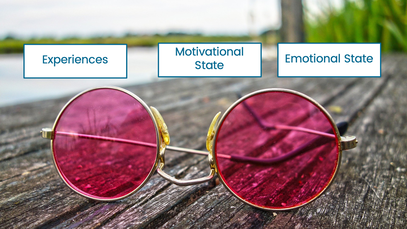 The three factors that can influence your perception are your experiences, your motivational state and your emotional state. In different motivational or emotional states, you will react to or perceive something in different ways. Also, in different situations you might employ a "perceptual defence" where you "see what you want to see" and disregard the facts. This is commonly known as ‘confirmation bias’, a unique way to distort reality to have it fit into how we believe the world to be. Steve Jobs is well known for doing this, his success was largely driven by holding on to an idea or point of view that brought Apples products to life. When people, including his own team, believed things couldn’t be done, Steve often saw things differently. Biographer Walter Isaacson writes that Robert Friedland "taught Steve the reality distortion field." (RDF). The RDF was said to be Steve Jobs' ability to convince himself, and others around him, to believe almost anything. He used a mix of charm, charisma, bravado, marketing prowess, appeasement and persistence. This approach was said to distort his co-workers' sense of proportion and scales of difficulties and to make them believe that whatever impossible task he had at hand was possible. This was the upside of his distorted reality, however Jobs also used the RDF to claim other peoples ideas as his own, even pitching an idea back to its originator, after dismissing it days earlier. Knowing that your point of view is based on your past thinking, and possibly outdated beliefs allows you to expand and strengthen your perception by taking on new points of view, perhaps like Steve, believing in possibility when no one else does. This is especially useful when you are faced with a problem you can’t solve. Changing the way you look at a problem, or changing the thoughts and beliefs you have about an issue can often lead to solutions and save many an argument. Most arguments are caused simply by the different ways in which we all see the world. Doing your best to put yourself in someone else's shoes can help to build stronger and more meaningful professional and personal relationships. In our Life Reloaded suite of programs, we explore tools designed to help broaden perspective and increase mental complexity. We look at how a team or individual can map differing points of view to solve organisational challenges and polarising viewpoints. We also explore how to use a simple activity (shared below) to help people step into the shoes of anybody, at any time, in any given situation. Einstein has been attributed as saying “You can’t solve a problem with the same level of thinking that caused it” You can’t solve a problem with the same level of thinking that caused it We tend to approach the world from the same perception that causes and creates our issues, making it difficult to find a solution or a way through it. I personally started using this simple activity after reading about a similar approach recommended in the classic book “Think & Grow Rich”. This is how easy it can be:
Although it appears simple this activity allows you use your imagination to see things from another person’s point of view. Imagining that you are someone else shifts your thinking patterns, helps you to temporarily suspend your own mindset, release your biased point of view allowing new information to flow to you. You may find this to be a simplistic way of looking at your problems, however I encourage you to experiment with it the next time you feel stuck. With a deeper understanding of perception and the right tools to shift your point of view, you will build confidence in your ability to resolve conflict, solve your own problems and shift your perspective in a powerful way. Learning to walk in another persons shoes and manage polarisation are great tools to have, especially in the world we live in. This form or critical thinking allows you to tap into new information and to see the upside of the things that are opposite to what you personally value, and acknowledge that your side isn’t perfect, it allows you and those you live and work with to be better humans together. Contact Blue Chip Minds to learn how to strengthen yours or your teams perception and increase mental flexibility.
In March 2020, life started to feel a little funky, and not in the cool hip, bluesy kind of way, more of a holy almighty what has just happened to the world as I knew it kind of panic funk, and I’m certain I wasn’t the only one feeling this heavy uneasy feeling. Retrospect is a wonderful thing and six months on, I am grateful for all the knowledge and practices I had leading up to the occurrence of this global funk. I was able to navigate out of it, with a quick journey up to a higher perspective, noticing what was contributing to my personal experience of what was going on in the world, taking stock of what I could control, and then taking decisive action and maintaining practices that would allow me to weather this unrelenting onslaught of confusion. Taking decisive action and maintaining practices that would allow me to weather this unrelenting onslaught of confusion. There are many tools and ideas that I called on during this time, but the one I believe that served me the most was an idea I was introduced to in 2004 as part of a Leadership program I had attended. The idea was simple; I could either choose to approach life from one of two narratives, that of a person who has mastery over their life or one who has adopted a victim mentality. I recall having to list all the traits of a victim and a master. Upon reflection, I promptly decided that Mastering my life was where it was all a. So began the long and never-ending path to Mastery of Self, I began doing my best to model my life on being a person who took full responsibility for their outcomes, I began reflecting and adapting behaviours along the way. This was a game changer for me, I was letting go of allowing external forces such as relationships, the economy, managers or any situation outside of my control define who I was and how I felt, I was determined to dive into the depths of my being to see what I was really made of, oh and for what it’s worth, I am still doing that! Years later I would come across two other frameworks that expanded on these Victim / Master narratives. I was introduced to two new roles that keep us in a state of Funk and two additional roles that would allow me to show up as a better human to those I was sharing life with, move beyond the ongoing cycle of uncertainty and victim hood. Enter ‘The Drama Triangle’ (Stephen Karpmen) and ‘The Empowerment Dynamic’ (David Emerald). These ideas took me from looking at how I showed up for myself in life and introduced me to the roles I (and you) play in every human interaction and in every situation. I now had a detailed brief of the games we all unwittingly play together. The ongoing narratives we shift between that keeps us, and as we are experiencing on a global scale, the world in the funk of Drama and the roles we can choose to step into, to finally lift that funk. Roles that keep us in the Funk. The three roles in Karpman’s Drama Triangle are Victim, Rescuer & Persecutor.
Freeing yourself from the Funk, requires a shift from reacting in a situation to choosing to pause and consciously respond to life’s events. When you practice responding, you take yourself out of the situation and are better equipped to observe your behaviours. David Emerald ‘s book “The Empowerment Dynamic” provides alternatives to playing in the dysfunctional Drama Triangle. You can move from showing up as a Victim, Persecutor or Rescuer to interacting in a positive and empowering way. With curiosity and compassion, you can move from being a rescuer to a supporter, from a persecutor to a challenger and from being a Victim of Circumstances to Self-Authoring and creating your life. Freed From The Funk “In order to change an existing paradigm you do not struggle to try and change the problematic model. You create a new model and make the old one obsolete.” - Buckminster Fuller Using the wisdom of Buckminster Fuller you can switch out the Drama roles by creating new mental models that would look like this.
You will notice a clear difference between the roles, the roles trapped in drama keep everyone stagnant, angry, anxious and frustrated. While the empowering roles facilitate growth, and physical, mental and emotional well being. It takes moments to read about these roles, however it takes a lifetime of application to master the empowering behaviours that will free you from the funk. As you reflect on life right now, this perpetual funk that most find themselves in, ask yourself, am I keeping myself here, am I dancing around with my friends and family in Drama or are we empowering ourselves and those we care about to take responsibility and self-author our way to greater agency? I want to leave you with this quote by Jim Rohn as food for thought and to inspire you to no longer being the victim to what is happening in the world we share, but to choose to take responsibility and create circumstances that turn the Funk into Funky (in a bluesy kind of way) “You must take personal responsibility. You cannot change the circumstances, the seasons, or the wind, but you can change yourself. That is something you have charge of.” - Jim Rohn Let's dance!
Georgia The Life Reloaded and Future Ready Leadership programs run by Blue Chip Minds dive deep into these models and much more to help you to stop dabbling in Drama and begin to reclaim your personal agency. Contributor: Georgia Ellis Back in 2013 after leaving my Senior Manager Role behind and stepping into a new version of myself as a Business Owner, I took a trip to Iceland. The icy and snowy landscape was not only epic, but it also provided a timely reminder of the cortical landscape of our brains. Kinda a weird connection to make, but stay with me...
As I took in the landscape I couldn't help but see a resemblance to a Human brain and the way our continual thinking carves out new and unique neural pathways, it occurred to me that as en employee I had been thinking a certain way, which had led me to have a rather successful career... but that thinking, and those neural pathways, were not going to serve me as a business owner. Fast forward to 2019, and with a deeper understanding of neurobiology and the interconnection of our thoughts, emotions and movement. I now appreciate the power of post conventional and complex thinking and the importance or rewiring our brain to steer us in a new direction... partly because of the science, and partly because it's exactly what I did to grow my business. I worked on my mindset first. In the book "The Biology of Belief" by Dr. Bruce Lipton, he explains how our thoughts and beliefs impact our biology. Did you know if you continuously think thoughts with a negative bias about life or the future, that is tell yourself woeful stories or make negative judgements of a situation or person, that you create a neural pathway in your Brain that hooks you up to seeing only the negative? Just like crevices in the snow that have been carved out by a sled taking the same path over time, those continual thoughts create a deep seeded negative bias. When you begin to understand neurobiology and neuroscience and even epigentics, you quickly discover that we can retrain our brains to “steer our sled” on to a new path with a positive outlook, then that pathway will show a physical change in our brains. Neuroplasticity means that our brains are continually firing and wiring new pathways, the more we think a thought, the stronger the connection or pathway, the less we think a thought, the weaker the pathway and eventually it prunes away. Each one of our thoughts and subsequent behaviors are responsible for this change in our brains. It's an empowering idea that we can literally begin to prepare ourselves for these extraordinary, complex and uncertain times with the nature of our thoughts. Not only does a switch in thinking help prepare us for the future, it has other profound effects on us physically and can even help reverse anxiety and depression. Research has shown that regular positive pole thinking can lead to:
Unfortunately negative pole thinking produces the opposite results. Take the point above about being more attractive to other people, I most certainly are turned off by negative people. The best thing about being in control of our thoughts is that we have a new opportunity each moment to enhance our emotional experience. I discovered many years ago that we always have a choice as to how we respond to situations, events and people. Armed with the knowledge that a positive attitude to life is worth nurturing, and that we can steer ourselves onto a different pathway on our habitual cortical landscape, then we can begin to work on strategies to make this happen for ourselves. Some strategies that I have found helpful for steering my thinking into a better future are:
The more I adopted these practices the easier it was to have a positive mindset. My cortical landscape was changing, and i began to naturally steer myself in a positive direction. Changing the way I thought about things, changed the emotional attachment i had with people and situations. I moved from being the victim to the external world to being the master of my inner world, which strangely, changed the way I saw the external events that used to trigger mental anguish. People who know me somehow think I have always had a positive outlook, the truth is I haven't, I had to teach myself and I am still a work in progress, with the know-how and tools to steer my thinking back on track towards an extraordinary future. |
Authors
Our Contributors are a mix of passionate and switched on Humans ready to share their, career, business, well-being, leadership and performance insights with you so you can be the architect of your own extraordinary future! Archives
April 2024
Categories
All
|
Global professional development solutions for individuals and organisations.
Working with Individuals and organisations in;
Australia | Singapore | Hong Kong | United States | India | United Kingdom | Dubai | China | Poland
Malaysia | New Zealand | Japan | Belgium | Austria | South Africa | Brazil | Canada
Working with Individuals and organisations in;
Australia | Singapore | Hong Kong | United States | India | United Kingdom | Dubai | China | Poland
Malaysia | New Zealand | Japan | Belgium | Austria | South Africa | Brazil | Canada
|
We acknowledge the Traditional Custodians of the land on which we live, work, meet and play. This most often is the Wurundjeri people. We pay our respects to Elders past, present and emerging of the Kulin Nation. We extend gratitude and respect to Aboriginal and Torres Strait Islander peoples and global indigenous cultures for their incredible wisdom, resilience, deep connection to the natural environment and their deeply transformative spiritual practices.
We have so much more to learn from you. |
Copyright © All Rights Reserved BLUE CHIP MINDS 2013 - 2021

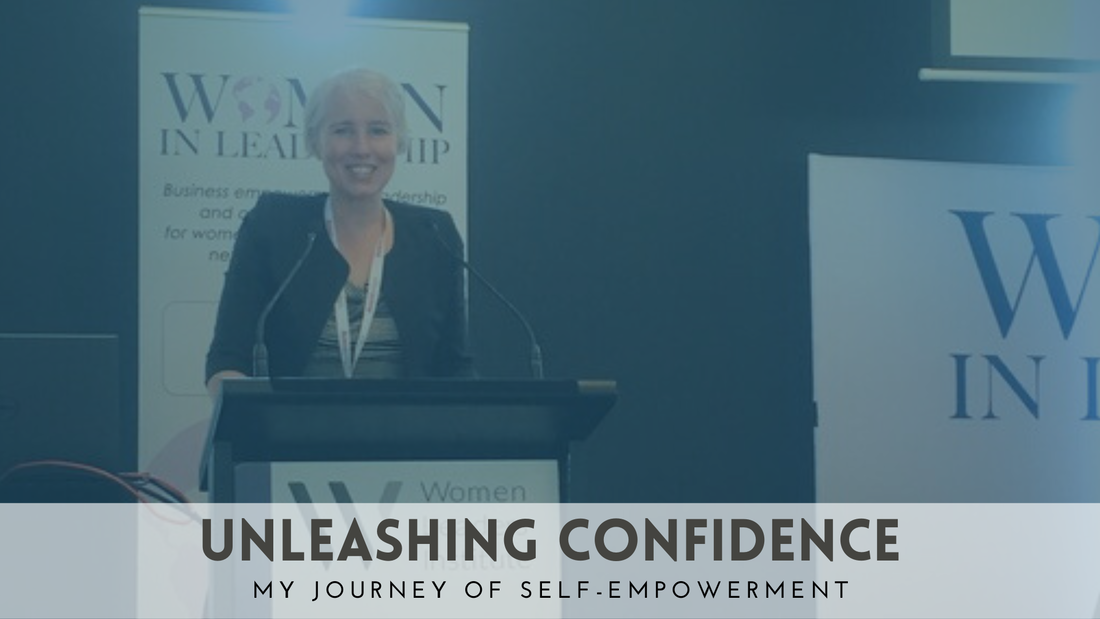
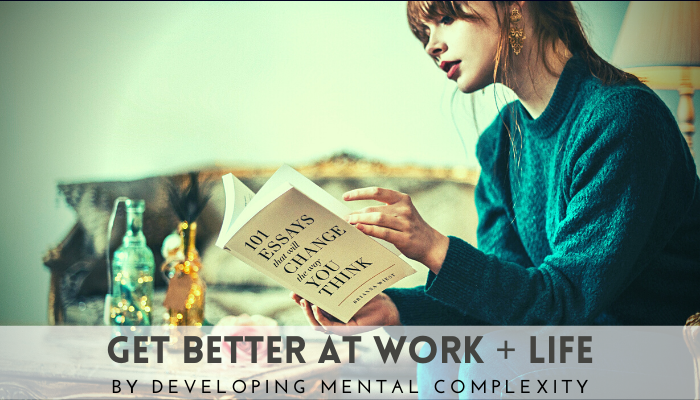
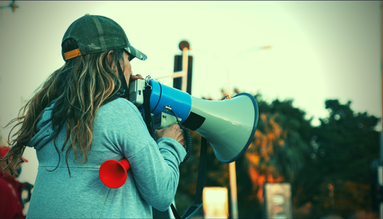
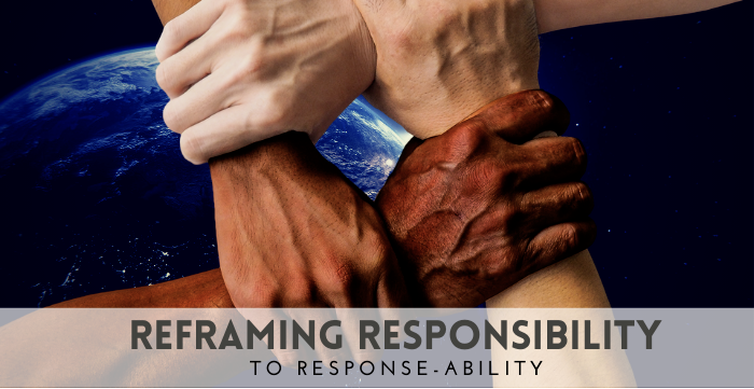

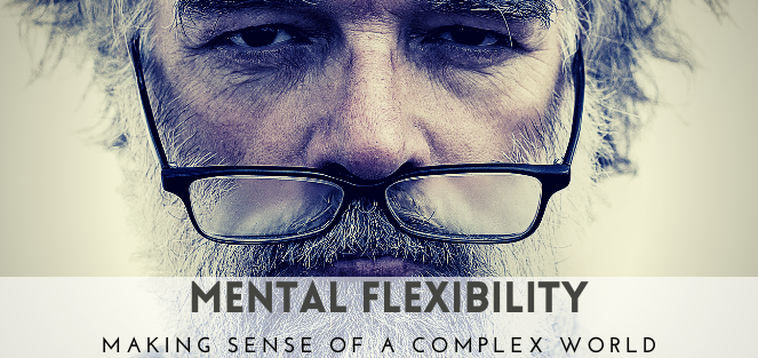
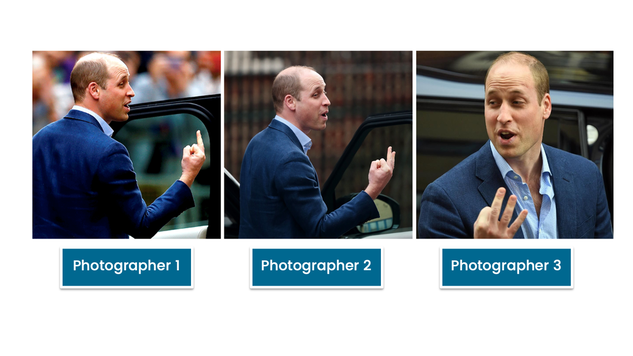
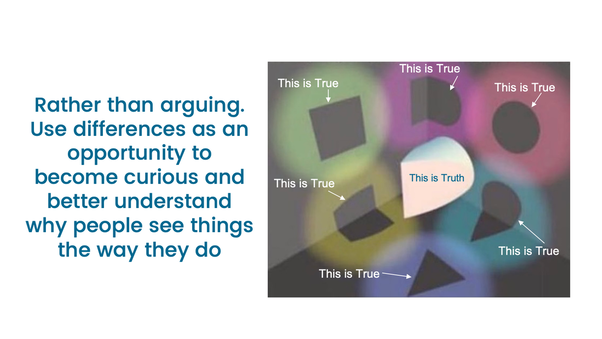
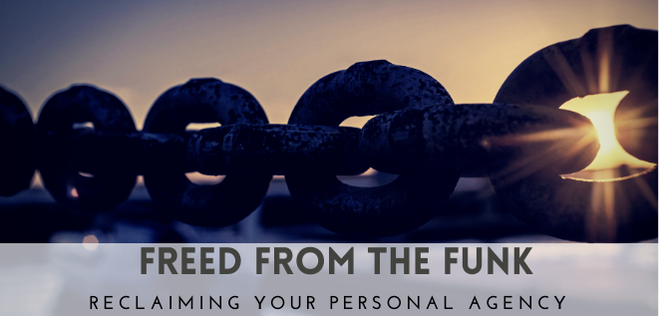
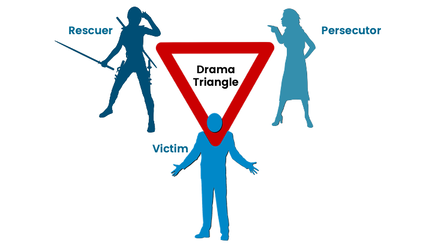
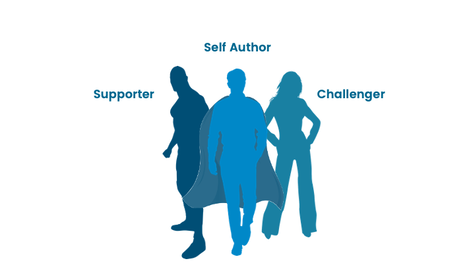

 RSS Feed
RSS Feed
